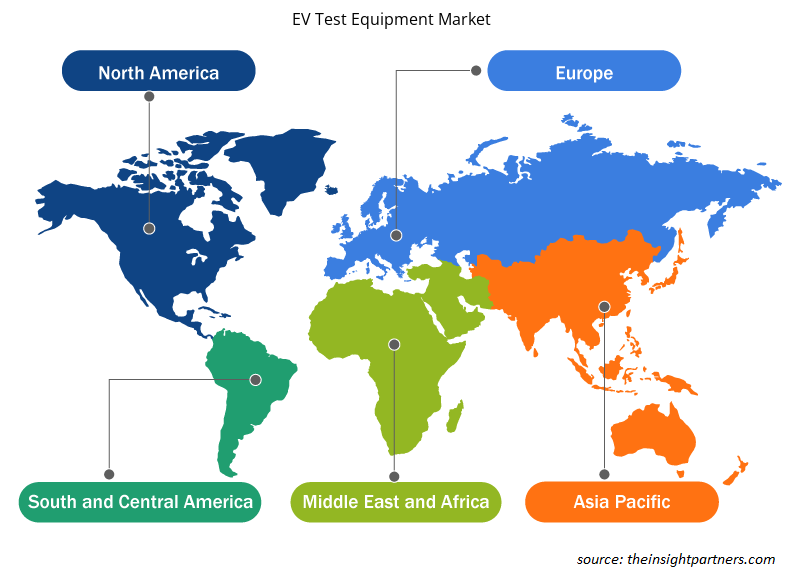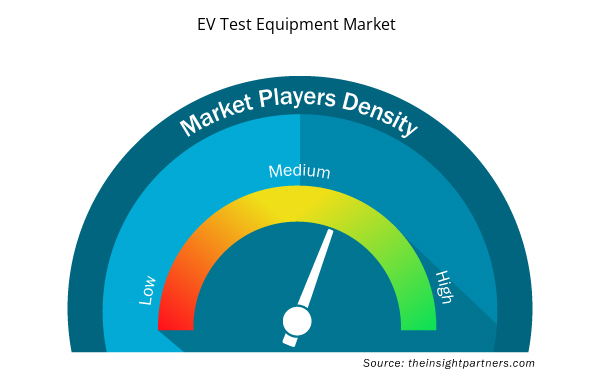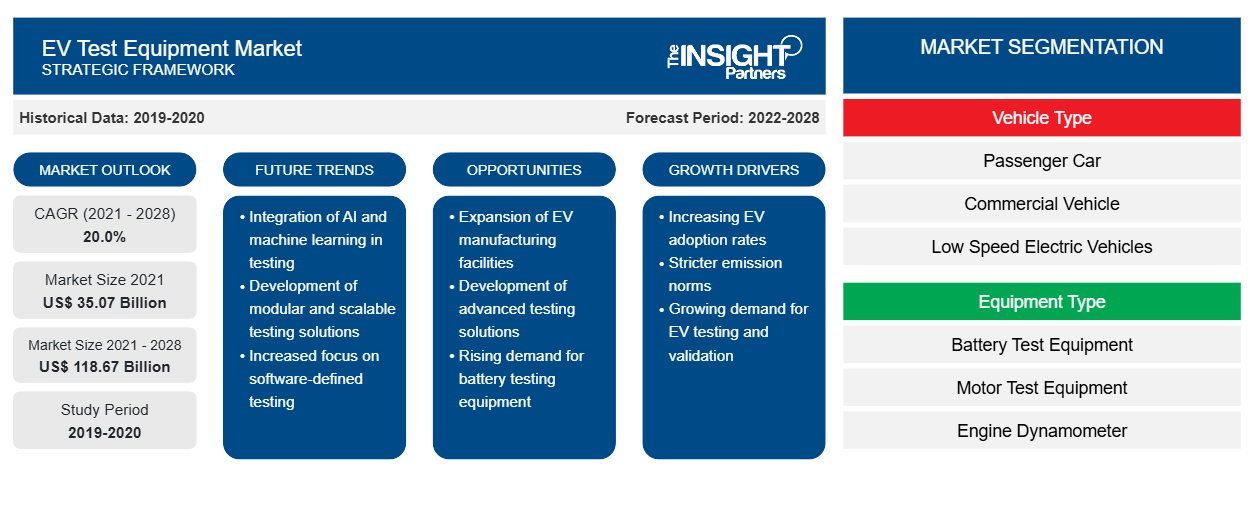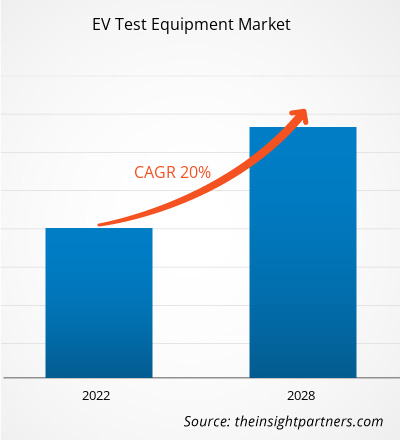电动汽车测试设备市场预计将从 2021 年的 350.7254 亿美元增长到 2028 年的 1186.7147 亿美元;预计 2022 年至 2028 年的复合年增长率为 20.0%。
电动汽车测试设备用于检查各种电动汽车组件,例如电池、电机和其他组件,以使汽车零部件保持竞争优势、提供有保证的性能并确保客户安全和满意度。测试设备用于电动汽车,以评估车辆整体性能、电动汽车电池和充电器测试、电力电子测试以及电机和测功机测试。电机测试设备用于使用传感器、电压探头和其他软件来验证电动汽车的扭矩或电信号和高速。
替代燃料汽车和联网移动出行需求的增加推动了电动汽车的销售。为了最大限度地减少汽车排放和污染,一些政府已经出台了鼓励使用电动汽车的规则。由于电动汽车需求的增加,电动汽车测试设备市场预计将得到发展。此外,更高的电压允许更快的充电,从而导致高性能电池、传动系统和充电器的采用。因此,电动汽车测试设备和软件的需求受到新电池技术进步、对车辆电子功能和特性的需求增加以及严格的排放规则的推动。
根据 EV-Volumes.com 的数据,2020 年是 PHEV 表现出色的一年,全球 BEV 和 PHEV 销量达到 320 万辆。即使在 COVID-19 疫情爆发后,欧洲 2020 年的电动汽车销量仍达 140 万辆,比 2019 年增长了 137%。对于同比下降 20% 的市场而言,这一增幅非常可观。此外,自 2015 年以来,欧洲首次在电动汽车市场表现优于中国。此外,许多企业正在恢复公共交通服务,这需要实施许多安全措施和标准。
新型软件解决方案的出现,例如用于实时车队管理和电气化加速的基于云的数字解决方案,正在塑造全球电动汽车测试设备市场。例如,EVBox 提供的充电管理软件使用户能够跟踪、管理和优化他们的电动汽车驾驶体验。因此,为了监控这一点,在预测期内,人工智能集成的高效测试解决方案将有很大的需求。
定制此报告以满足您的需求
您可以免费定制任何报告,包括本报告的部分内容、国家级分析、Excel 数据包,以及为初创企业和大学提供优惠和折扣
- 获取此报告的关键市场趋势。这个免费样品将包括数据分析,从市场趋势到估计和预测。
COVID-19 疫情对欧洲电动汽车测试设备市场的影响
COVID-19 疫情爆发和复苏之路对道路网络产生了各种影响。2020 年,欧洲各地电动汽车测试设备的购买量有所增加。例如,德国、法国和意大利 2020 年上半年在欧洲的电动汽车销量比 2019 年高出 55%。欧洲电动汽车测试设备市场的增长是由于制造商自 2020 年 1 月起越来越需要遵守欧盟针对新乘用车和厢式货车的更严格的二氧化碳标准。总部位于德国的 VDE 研究所专门从事科学、标准化、产品测试、认证和应用咨询。2019 年,VDE 研究所被联邦机动车运输管理局任命为 A、B 和 D 类技术服务机构,使其能够根据《公路交通法》、《车辆零部件法》和《欧洲经济委员会联合国协议》的规定对电动汽车进行测试(ECE 法规)。 VDE 研究所进行的测试和认证可确保整个系统(包括充电基础设施、充电站和壁挂式充电箱)在产品早期开发阶段的无故障移动性和数据安全,以便进行最终批准(验证)测试。庞大的电动汽车市场、拥有数十年电气安全测试经验的机构以及对测试集成到车辆中的电子元件的不断增长的需求推动了欧洲电动汽车测试设备市场的增长。
电动汽车测试设备市场洞察
电动汽车充电站公司正在开发创新的充电站技术,例如涡轮增压、terra HP 充电、智能充电系统、无线电力传输和双向充电器。电动汽车充电系统的这些进步需要改进测试技术。ROLEC、DEKRA 和 TUV Rheinland 等公司提供电动汽车充电站测试系统。智能充电是最先进的充电系统之一。智能充电允许在所有活跃充电站之间实现负载平衡和可用功率容量的比例分配。它还有助于使用单一基于云的管理平台从各个站点收集关键充电数据。
基于车辆类型的市场洞察
根据车型,电动汽车测试设备市场分为乘用车、商用车和低速电动汽车。2021 年,乘用车领域占据了电动汽车测试设备市场的最大份额。
基于设备类型的市场洞察
根据设备类型,电动汽车测试设备市场细分为电池测试设备、电机测试设备、发动机测功机、底盘测功机、变速箱测功机、燃油喷射泵测试仪、逆变器测试仪、电动汽车传动系统测试、车载充电器、交流/直流电动汽车供电设备。2021 年,电池测试设备部分占据了电动汽车测试设备最大的市场份额。EV test equipment market is segmented into battery test equipment, motor test equipment, engine dynamometer, chassis dynamometer, transmission dynamometer, fuel injection pump tester, inverter tester, EV drivetrain test, on-board charger, AC/DC EVSE. In 2021, the battery test equipment segment accounted for the largest EV test equipment market share.
基于应用的市场洞察
根据应用,电动汽车测试设备市场细分为电动汽车零部件和传动系统、电动汽车充电和动力系统。2021 年,动力系统部分占据了电动汽车测试设备最大的市场份额。
基于最终用户的市场洞察
根据最终用户,电动汽车测试设备市场分为 OEM、一级供应商、研究和学术部门、其他。2021 年,一级供应商部门占据了电动汽车测试设备市场的最大份额。
市场参与者采用合并、收购和市场举措等策略来保持其在电动汽车测试设备市场预测中的地位。电动汽车测试设备市场报告中主要参与者的一些发展如下:
- NI 的工程创新中心 (EIC) 于 2022 年 3 月宣布在班加罗尔启动。该工程设施将为 NI 的客户、合作伙伴以及为当地航空航天和军事部门服务的初创公司提供帮助。EIC 还将用于教授航空航天和军事行业的下一代工程师系统理解。
- 2021 年,Keysight Technologies, Inc. 与 Proventia Oy 联手开发电动汽车 (EV) 电池测试解决方案。Keysight 与 Proventia 之间的合作打造了一个不受地点限制、可快速实施的安全测试设施。
电动汽车测试设备市场区域洞察
Insight Partners 的分析师已详尽解释了预测期内影响电动汽车测试设备市场的区域趋势和因素。本节还讨论了北美、欧洲、亚太地区、中东和非洲以及南美和中美洲的电动汽车测试设备市场细分和地理位置。

- 获取电动汽车测试设备市场的区域特定数据
电动汽车测试设备市场报告范围
| 报告属性 | 细节 |
|---|---|
| 2021 年市场规模 | 350.7亿美元 |
| 2028 年市场规模 | 1186.7亿美元 |
| 全球复合年增长率(2021 - 2028) | 20.0% |
| 史料 | 2019-2020 |
| 预测期 | 2022-2028 |
| 涵盖的领域 | 按车辆类型
|
| 覆盖地区和国家 | 北美
|
| 市场领导者和主要公司简介 |
|
电动汽车测试设备市场参与者密度:了解其对业务动态的影响
电动汽车测试设备市场正在快速增长,这得益于终端用户需求的不断增长,这些需求源于消费者偏好的不断变化、技术进步以及对产品优势的认识不断提高等因素。随着需求的增加,企业正在扩大其产品范围,进行创新以满足消费者的需求,并利用新兴趋势,从而进一步推动市场增长。
市场参与者密度是指在特定市场或行业内运营的企业或公司的分布情况。它表明在给定市场空间中,相对于其规模或总市场价值,有多少竞争对手(市场参与者)存在。
在电动汽车测试设备市场运营的主要公司有:
- 美国国家仪器公司
- 堀场制作所
- 阿尔宾仪器公司
- 麦科公司
- 是德科技公司
免责声明:上面列出的公司没有按照任何特定顺序排列。

- 了解电动汽车测试设备市场主要参与者概况
公司简介
- 美国国家仪器公司
- 堀场制作所
- 阿尔宾仪器公司
- 麦科公司
- 是德科技
- 弗劳德公司
- Dynomerk 控制
- Comemso 电子有限公司
- 杜尔集团
- 德国莱茵TÜV
- 天祥集团
- 东洋系统株式会社
- 圆益PNE株式会社
- 历史分析(2 年)、基准年、预测(7 年)及复合年增长率
- PEST 和 SWOT 分析
- 市场规模价值/数量 - 全球、区域、国家
- 行业和竞争格局
- Excel 数据集



Report Coverage
Revenue forecast, Company Analysis, Industry landscape, Growth factors, and Trends

Segment Covered
This text is related
to segments covered.

Regional Scope
North America, Europe, Asia Pacific, Middle East & Africa, South & Central America

Country Scope
This text is related
to country scope.
常见问题
Surge in global production and sales of EVs and support from governments are driving the growth of the EV test equipment market.
The market opportunity lies in developing countries. Developing countries have become a hub of opportunity for various markets, including the EV test equipment market. Further, integration of new technologies is presenting significant potential for the future growth of the EV test equipment market players.
In 2021, APAC led the market with a substantial revenue share, followed by Europe and North America. APAC is a prospective market for EV test equipment manufacturers.
Based on vehicle type, the EV test equipment market is segmented into passenger car, commercial vehicle, and low speed electric vehicles. In 2021, the passenger car segment led the EV test equipment market, accounting for the largest share in the market.
The major five companies in the EV test equipment market include National Instruments Corporation; KUKA AG; KEYSIGHT TECHNOLOGIES, INC.; teamtechnik Group; and TOYO SYSTEM CO., LTD.
Based on application, the EV test equipment market is segmented into EV component and drivetrain system, EV charging, and powertrain. In 2021, the powertrain segment led the EV test equipment market, accounting for the largest share in the market.
Trends and growth analysis reports related to Electronics and Semiconductor : READ MORE..
The List of Companies - EV Test Equipment Market
- National Instruments Corporation
- Horiba Ltd.
- Arbin Instruments
- Maccor Inc.
- KEYSIGHT TECHNOLOGIES, INC.
- Froude, Inc
- Dynomerk Controls
- Comemso electronics GmbH
- Durr Group
- TÜV RHEINLAND
- INTERTEK GROUP PLC
- TOYO SYSTEM CO., LTD
- WONIK PNE CO., LTD
The Insight Partners performs research in 4 major stages: Data Collection & Secondary Research, Primary Research, Data Analysis and Data Triangulation & Final Review.
- Data Collection and Secondary Research:
As a market research and consulting firm operating from a decade, we have published and advised several client across the globe. First step for any study will start with an assessment of currently available data and insights from existing reports. Further, historical and current market information is collected from Investor Presentations, Annual Reports, SEC Filings, etc., and other information related to company’s performance and market positioning are gathered from Paid Databases (Factiva, Hoovers, and Reuters) and various other publications available in public domain.
Several associations trade associates, technical forums, institutes, societies and organization are accessed to gain technical as well as market related insights through their publications such as research papers, blogs and press releases related to the studies are referred to get cues about the market. Further, white papers, journals, magazines, and other news articles published in last 3 years are scrutinized and analyzed to understand the current market trends.
- Primary Research:
The primarily interview analysis comprise of data obtained from industry participants interview and answers to survey questions gathered by in-house primary team.
For primary research, interviews are conducted with industry experts/CEOs/Marketing Managers/VPs/Subject Matter Experts from both demand and supply side to get a 360-degree view of the market. The primary team conducts several interviews based on the complexity of the markets to understand the various market trends and dynamics which makes research more credible and precise.
A typical research interview fulfils the following functions:
- Provides first-hand information on the market size, market trends, growth trends, competitive landscape, and outlook
- Validates and strengthens in-house secondary research findings
- Develops the analysis team’s expertise and market understanding
Primary research involves email interactions and telephone interviews for each market, category, segment, and sub-segment across geographies. The participants who typically take part in such a process include, but are not limited to:
- Industry participants: VPs, business development managers, market intelligence managers and national sales managers
- Outside experts: Valuation experts, research analysts and key opinion leaders specializing in the electronics and semiconductor industry.
Below is the breakup of our primary respondents by company, designation, and region:

Once we receive the confirmation from primary research sources or primary respondents, we finalize the base year market estimation and forecast the data as per the macroeconomic and microeconomic factors assessed during data collection.
- Data Analysis:
Once data is validated through both secondary as well as primary respondents, we finalize the market estimations by hypothesis formulation and factor analysis at regional and country level.
- Macro-Economic Factor Analysis:
We analyse macroeconomic indicators such the gross domestic product (GDP), increase in the demand for goods and services across industries, technological advancement, regional economic growth, governmental policies, the influence of COVID-19, PEST analysis, and other aspects. This analysis aids in setting benchmarks for various nations/regions and approximating market splits. Additionally, the general trend of the aforementioned components aid in determining the market's development possibilities.
- Country Level Data:
Various factors that are especially aligned to the country are taken into account to determine the market size for a certain area and country, including the presence of vendors, such as headquarters and offices, the country's GDP, demand patterns, and industry growth. To comprehend the market dynamics for the nation, a number of growth variables, inhibitors, application areas, and current market trends are researched. The aforementioned elements aid in determining the country's overall market's growth potential.
- Company Profile:
The “Table of Contents” is formulated by listing and analyzing more than 25 - 30 companies operating in the market ecosystem across geographies. However, we profile only 10 companies as a standard practice in our syndicate reports. These 10 companies comprise leading, emerging, and regional players. Nonetheless, our analysis is not restricted to the 10 listed companies, we also analyze other companies present in the market to develop a holistic view and understand the prevailing trends. The “Company Profiles” section in the report covers key facts, business description, products & services, financial information, SWOT analysis, and key developments. The financial information presented is extracted from the annual reports and official documents of the publicly listed companies. Upon collecting the information for the sections of respective companies, we verify them via various primary sources and then compile the data in respective company profiles. The company level information helps us in deriving the base number as well as in forecasting the market size.
- Developing Base Number:
Aggregation of sales statistics (2020-2022) and macro-economic factor, and other secondary and primary research insights are utilized to arrive at base number and related market shares for 2022. The data gaps are identified in this step and relevant market data is analyzed, collected from paid primary interviews or databases. On finalizing the base year market size, forecasts are developed on the basis of macro-economic, industry and market growth factors and company level analysis.
- Data Triangulation and Final Review:
The market findings and base year market size calculations are validated from supply as well as demand side. Demand side validations are based on macro-economic factor analysis and benchmarks for respective regions and countries. In case of supply side validations, revenues of major companies are estimated (in case not available) based on industry benchmark, approximate number of employees, product portfolio, and primary interviews revenues are gathered. Further revenue from target product/service segment is assessed to avoid overshooting of market statistics. In case of heavy deviations between supply and demand side values, all thes steps are repeated to achieve synchronization.
We follow an iterative model, wherein we share our research findings with Subject Matter Experts (SME’s) and Key Opinion Leaders (KOLs) until consensus view of the market is not formulated – this model negates any drastic deviation in the opinions of experts. Only validated and universally acceptable research findings are quoted in our reports.
We have important check points that we use to validate our research findings – which we call – data triangulation, where we validate the information, we generate from secondary sources with primary interviews and then we re-validate with our internal data bases and Subject matter experts. This comprehensive model enables us to deliver high quality, reliable data in shortest possible time.


 获取此报告的免费样本
获取此报告的免费样本